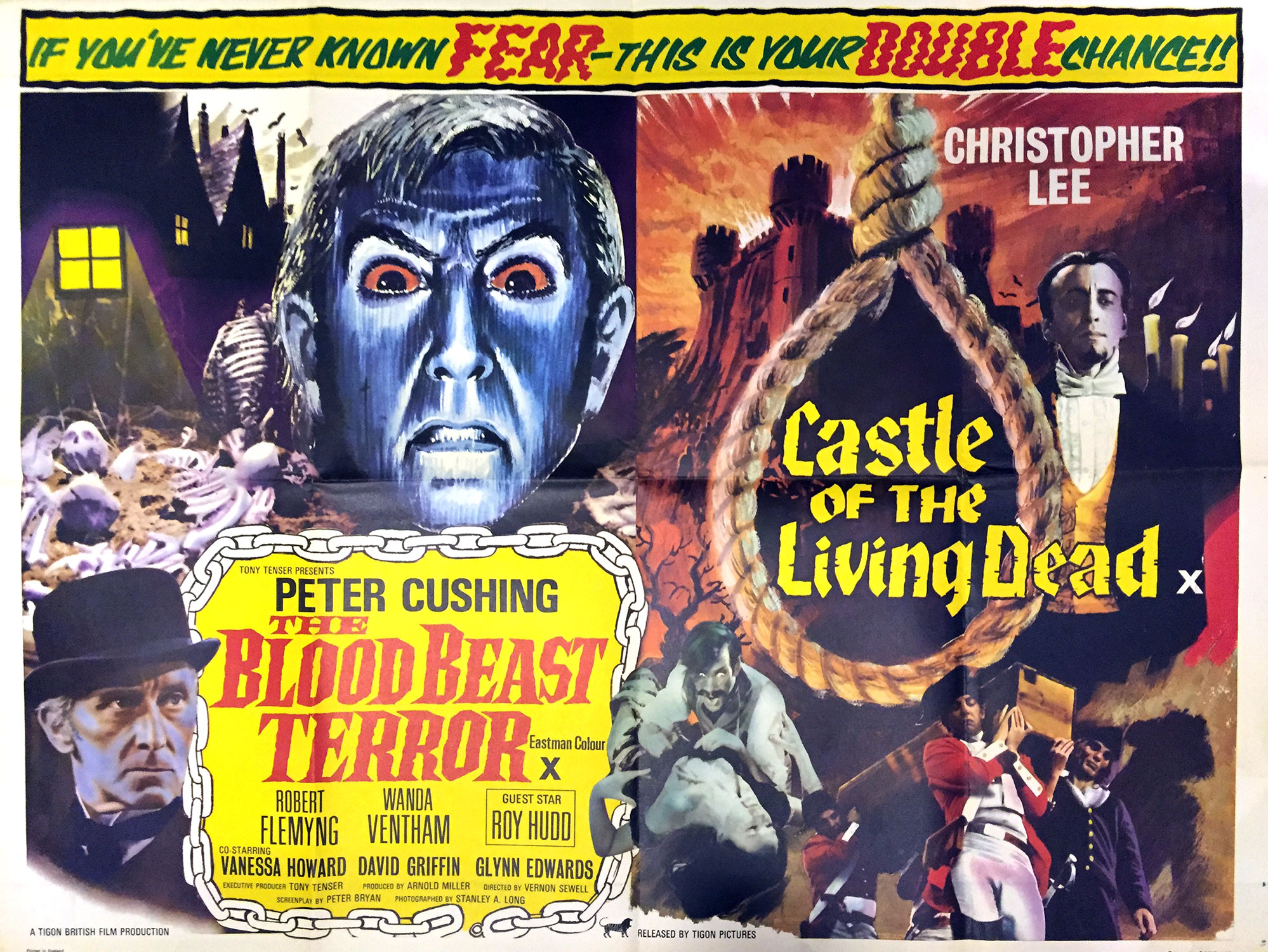Hammer wasn’t the only production company making gothic horror films in England in the mid-20th century. Amicus productions dipped a few toes into the waters, as did Tigon, the company behind The Blood Beast Terror.
Released in 1968, Terror is all-but indistinguishable from contemporary Hammer productions, all the way up to its star, Peter Cushing. The only thing I could find that really separates this film from a Hammer production is that this film had a lower production quality. Hammer didn’t exactly break the bank when it came to financing their pictures, and one has to have a strong suspension of disbelief to watch them. Those familiar with Hammer films will know to what I’m referring. For everyone else, this film’s production issues are apparent in the questionable quality of the film stock, the poor sound quality of the rerecorded dialogue, and the plainness of the set decoration. It never feels as if this film inhabits the distant past, especially in moments when horse-drawn carriages trundle over asphalt pavement.
The best Hammer flicks transport a viewer through time and space. This film doesn’t do so to the same extent. Further proof of this is in the first scene, which we are led to believe is somewhere in Africa, but was clearly filmed in rural England. The deciduous trees were a big giveaway.
The good news is, despite the production values, The Blood Beast Terror is a decent movie.
Directed by Vernon Sewell, working from a script by Peter Bryan, Terror stars Cushing as Inspector Quennell of the Metropolitan Police. It’s the 19th century, not too many years after Jack the Ripper terrorized London. A new killer is on the scene — one who attacks young, handsome men and drains them of their blood.
Two of the victims were the students of Dr. Carl Mellinger (Robert Flemyng), an entomologist. Mellinger cooperates with the investigation, but it’s clear he is hiding something. No real spoilers, here. Flemyng didn’t have the best poker face when his character was lying to Quennell.
Mellinger lives with his buxom daughter, Clare (Wanda Ventham), who delights in the attentions of Mellinger’s students. Perhaps she knows something, as well.
As the film goes on, there are more victims. What is doing the killing isn’t revealed until near the end of the film, but it’s a monster of some sort. This is gothic horror, after all, and not a Sherlock Holmes mystery. Sewell and company promised us a beast in the title,  and they made sure the audience knew there would be a beast reveal at some point before many minutes had gone by.
and they made sure the audience knew there would be a beast reveal at some point before many minutes had gone by.
I won’t give away the beast, but I will say it’s typical of low-budget gothic horror of the era. It looks awful. There’s no way around that. Terror is from 1968, and the creature effects in this film wouldn’t have been passable for a Hollywood monster flick from the ’30s. And as noted above, this was not an abnormal state of affairs for flicks such as this. There were some wonderful gothic horror flicks that came out of England, but effects were, without a single exception I can name, below par.
Sewell didn’t have two farthings to work with, and that did affect what he could produce. But, the lack of cash had zero effect on Sewell’s pace. There are no dead spots or lazy stretches to be found in this film. Sewell didn’t pad the running time. He told the story efficiently and with little waste.
Cushing as Quennell is a delight. Sometimes his performances seethed with impatience and frustration, as if he wanted to be anywhere else at that particular moment. Cushing felt all-in with this role, however. He’s all seriousness, per normal, but with naturalness. The performance is a study in professionalism.
Another performance of note was by Glynn Edwards as Sergeant Allan. His character was a gruff and almost unintelligible uniformed police officer, and was invaluable in aiding Quennell’s investigation. The performance wasn’t high technique, but, again, it was professional. He was believable, which is the hallmark I wish all performers could reach.
As with so many of its contemporaries, The Blood Beast Terror is like a stage play brought to life. Not because of content, but because there are greater demands on a viewer’s suspension of disbelief than in other films. That’s not inherently bad, but it does make production values stand out more. This film is able to overcome its limitations with good pacing, acting, and story, but it’s a close call, as indicated by all the negative bits of criticism above. Fans of the genre, and of Peter Cushing, should enjoy this film quite a bit, though. I did.
